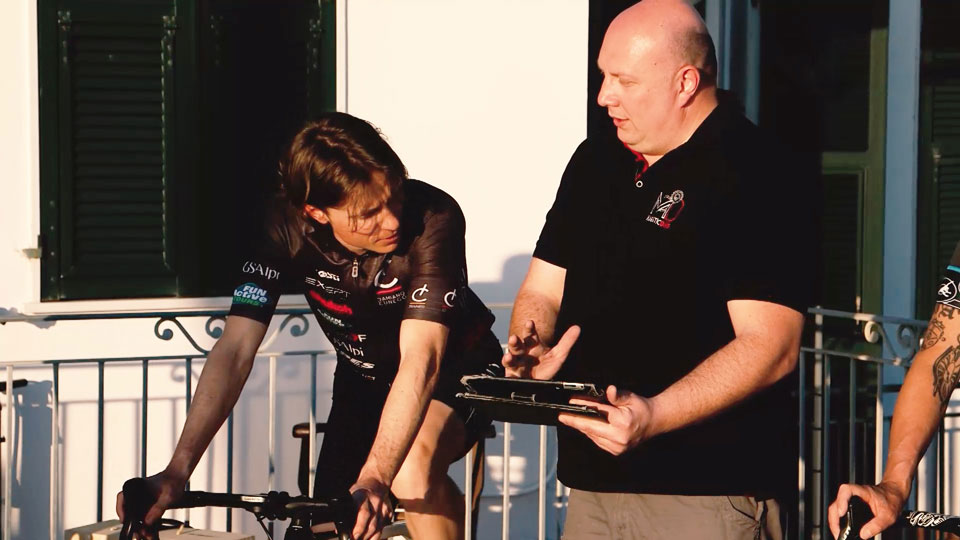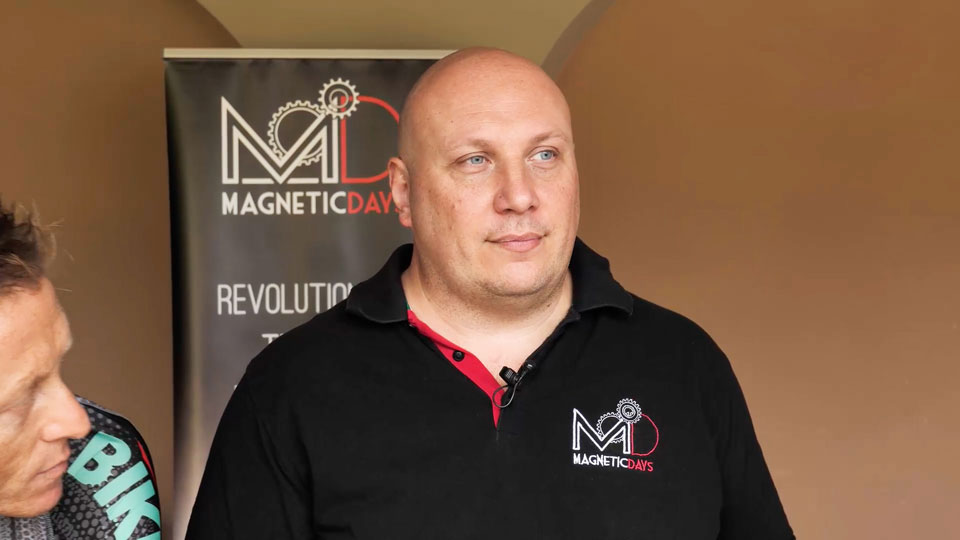How to ride faster uphill with indoor training: what Coach Luca Bianchini thinks about it
Going fast uphill is one of the goals of many cycling, mountain bike and triathlon enthusiasts. The recent lockdown has presented many concerns to all athletes struggling to both keep fit and not lose all the hard work done until the end of February. In the run-up to phase 2, one of the most frequently asked question was: “Will I be able to go uphill as fast as before”?
My answer, short and reassuring, has always been: “Of course, actually, you will go faster”! “But how can I go fast uphill if I don’t pedal uphill”? More often than not was the reply! At this point, I want to share some principles of Physics by providing a detailed answer.

Let’s assume we have an athlete weighing 70 kg and a 7 kg bicycle with an additional 2.2 kg of weight between clothes and water bottles. Uphill, at a speed of 30 km/h, we estimate about 195 Watts. These Watts are used to overcome the resistances (front section, friction and slope being the main ones) and to maintain speed. At the same speed (30 km/h) – with a gradient of 1% – we must supply 261 Watts; at 2% 327 Watts, at 3% 293 Watts. If we want to keep the power constant of about 200 Watts, we must adjust the speed: with a gradient of 1% we will go 26 km/h, 2% 23 km/h, 3% 19.5 km/h. As we can see from these simple calculations, for the same wattage the speed must necessarily change. As previously stated, the three main factors that influence the forward movement are:
a) front section (also called drag), which increases proportionally to the speed;
b) force of gravity (which increases as the slope increases);
c) friction such as that generated by old bearings, deflated wheels or a dirty chain.
In the following table I summarized the numbers shown above with the addition of the gravity and drag factors.
| Slope
(%) |
Speed
(Km/h) |
Power
(Watt) |
Gravity
(% of the total) |
Drag
(% of the total) |
Other
(% of the total) |
| 0 % | 30 | 195 | 0 | 81 | 19 |
| 1 % | 26 | 191 | 30 | 54 | 16 |
| 2 % | 23 | 200 | 50 | 36 | 14 |
| 3 % | 19,5 | 194 | 65 | 23 | 12 |
As you can see, as the slope increases, the influence of gravity increases, while the drag decreases as speed decreases. The 3% gradient is an easily cycled climb for many cyclists. I used the weight of same person (plus gear) as an example, as we know the overall weight of the “cyclist-bicycle-clothes” system affects the weight/power ratio.
Now, going back to the initial question “how to go faster uphill”, there are many recommendations that can be found online, from technical tips to training with various repetitions. However, all these tips have one thing in common: to go fast uphill you need to increase your threshold power.
In normal conditions, in fact, we would do a long uphill at the intensity of the fondo medio, which we know is around 80% of our FTP. If we take our cyclist as an example, he should have a threshold of about 250 Watts. Using a bit of logical reasoning, if we increase the power of the anaerobic threshold by 5%, we go to 262 Watts, which is 210 Watts at 80%. In terms of speed, we are at 20.5 km/h at 3%, that is 1 kilometer per hour more compared to the previous condition. We have improved!

We always need to keep in mind that 200 Watts uphill or 200 Watts on a flat surface are the same. What changes is the speed. So, the opening question should be: “Does it make sense to train uphill to go fast uphill”? I suppose the answer is starting to be clear, but let’s make another consideration. When training with repetitions uphill, you can do shorter or longer repetitions. The intensity will decrease proportionally to the duration of the repetition. When you go below the threshold, the training stimulus is no longer aimed at increasing the threshold power but at being able to last longer. This is also a useful and necessary factor, but performing “al medio” will not reduce your climbing time at all.
To stimulate the body to increase the threshold it is necessary to provide stimuli around and beyond the threshold power, as we do for example at MagneticDays through the customized HTT training methodology expressed on JARVIS smart trainers. The question I ask you now – considering what has been said – is: “Is it therefore possible to go fast uphill with indoor training”? In indoor training we have 8+1 advantages that help us work on improving FTP. Let’s see them in detail:
- We exclude the limiting factors of performance (force of gravity, drag and various frictions);
- We have an optimal biomechanical efficiency;
- We exclude stopwatches, tables to follow and ideal routes to look for;
- We calibrate the intensities according to our abilities;
- We avoid U-turns in curves and crazy descents to get back into recovery time;
- We have the constant supply of working power and the consequent optimization of the cadence;
- We have the optimization of training times;
- We challenge our teammates on Sunday instead of thinking about repetitions;
- HTT protocols are personalized workouts aimed at improving performance and well-being.
In conclusion, I ask you: “Do you have to go uphill to go uphill”? Personally I am convinced that we must work on improving the individual performance, using an ideal training method and having patience and confidence for at least three weeks, which is the minimum time to appreciate the results. Then, if you want, nothing (but further lockdowns!) prevents you from getting on your bike and going to train uphill.
PS: The calculation of the weight / power ratio (the famous Watt/Kg of body weight), are included in the category “force of gravity”. When you are outdoors, it is MANDATORY to calculate the body weight of your clothes before going out and add it to the weight of the bicycle with full bottles. That is, in fact, the overall weight when riding outdoors. In indoor training, the force of gravity is zero, so you just need to do the division using your won weight, and nothing more.










